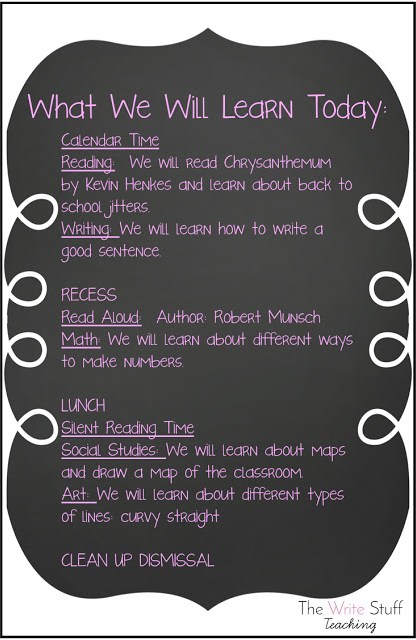Building a positive classroom community beginning on day one of the new school year is so important. There are different ideas around just how to do this. Some teachers focus on getting-to-know-you ideas while others put more emphasis on routines, rules and expectations. So what is the best way to build community early on? A little bit of both. Let’s take a look.

When we talk about building a positive community, we are really referring to ways to help everyone in your classroom feel safe, welcome, happy and appreciated. (That includes you!). The best ways to do this include a mixture of getting to know everyone and getting to know routines and expectations because children learn best when they know what is expected of them and what to expect in their day, as well as that wonderful feeling of being accepted.
Maslow (1943) first introduced us to the Hierarchy of Needs as he studied human motivation. It’s just as important now as it was back then. Here is a visual of his hierarchy. Keep these needs in mind as you work with your students this year to build that positive classroom community. When you spend a lot of time on the first 3 from the bottom: physiological, safety and love/belonging, then true learning in the academic sense can happen. When the first 3 are achieved/developed, your students’ self esteem will begin to grow and so will their ability to learn. What is truly wonderful is that you will notice less behavior problems as your students’ needs are met and their social and emotional confidence grows.
Here is an adaptation I have created to demonstrate how this hierarchy of needs might be useful as we are building community in our classrooms this year. This is a student friendly version. It’s a great way to teach your students self awareness and what it looks like to be personally responsible.
Maslows Heirarchy of Needs Kid Friendly
If you would like to download a FREE copy you can get it by clicking here or on the pictures. I would love it if you could let me know what you think by leaving feedback on TPT after your download.
So with these things in mind, here are a few simple things that you can do beginning on the very first day of school to help meet your students’ needs to help them feel like they are part of a new, special community of learners.
1. Start the year ORGANIZED. Have everything ready to go where possible on the first day of school. Kids can feel your stress and if you are not feeling ready, then it will show.
Plan where you want your students to sit (whether it be a flexible seating plan or a more traditional plan) on the first day. Give them a “home” so that they feel settled and this can be changed later as you get to know the students. This is true from kindergarten all the way to high school.
2. Plan a RELAXED ACTIVITY for students when they come in as an “icebreaker”. Coloring or writing is often a great place to start. All About Me activities are also a great place to start.
3. Spend the week going over ROUTINES so that students know just where you stand on things like going to the washroom, handing in assignments etc. I like to always tell my students WHY we have the rule. (It’s usually a safety reason but most appreciate knowing why.)
It’s important to have a “schedule” on the board each day. Including the learning intentions of each subject is also important so that students know just what they will be learning that day, not just the subject. When students can see what the shape of their day is, it helps to settle them because they know what’s coming. This is especially true for special needs learners. When the learning outcome is also included, this helps students to make connections and learn deeper.

4. Begin CLASSROOM MEETINGS right away. It’s a great way for everyone to get to know each other AND it’s the perfect place to teach early listening and turn taking skills. Read more about classroom meetings here.
5. Find something INTERESTING AND UNIQUE about each child in the first week. Use that as a discussion starter with them. For example, if you learn that they have a dog at home and you do too, talk to them about their dog. This is a great way to treat each child as an individual.
6. Plan on giving your students TIME TO UNWIND and give their body and brains a break throughout the day. The time spent doing that will help to add increased minutes of focussed, engaged learning time when they are working. It’s worth it! (More on this in part 3.)
7. Plan lots of SMALL GROUP ACTIVITIES where members change regularly. Ideas might include shared reading, board games, art projects, etc to help your students get to know each other in a more relaxed environment. As the week goes on, have students work in smaller groups like 3 and then in partners. (Starting in partners right away could be uncomfortable.) Take notice of kids that are shy or not able to work in a small group successfully for whatever reason.
I hope this post has given you some ideas to begin your year off on a positive note. The more time you spend building community in the beginning, the better the year will go.
In the next post in this series, I will be discussing 4 Great Organization Ideas for Your Classroom





Leave a Reply